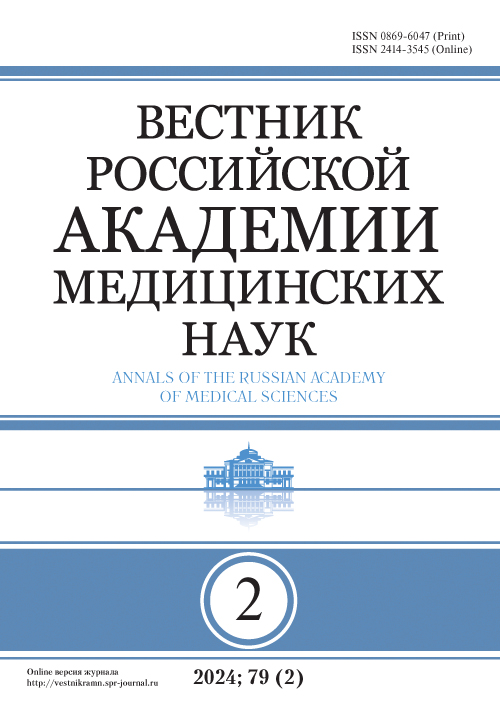ВОЗВРАЩЕНИЕ К ЖИЗНИ ПОСЛЕ ХОЛОДОВОЙ ОСТАНОВКИ ДЫХАНИЯ ФИЗИОЛОГИЧЕСКИМИ МЕТОДАМИ БЕЗ ОТОГРЕВАНИЯ ТЕЛА
- Авторы: Иванов К.П.1
-
Учреждения:
- Институт физиологии им. И.П. Павлова, Санкт-Петербург
- Выпуск: Том 69, № 7-8 (2014)
- Страницы: 5-9
- Раздел: АКТУАЛЬНЫЕ ВОПРОСЫ ФИЗИОЛОГИИ
- Дата публикации: 20.07.2014
- URL: https://vestnikramn.spr-journal.ru/jour/article/view/401
- DOI: https://doi.org/10.15690/vramn.v69.i7-8.1103
- ID: 401
Цитировать
Аннотация
Остановка дыхания при глубокой гипотермии означает смерть, хотя сердце при низкой температуре может еще ритмически сокращаться
до 30–40 мин. Попытки отогревания лишь приближают время остановки сердца. Принято считать, что в холоде в нервных клетках накапливаются ионы кальция (Ca2+). Избыток этих ионов тормозит метаболизм. Кроме того, он стимулирует протеазы клетки, которые разрушают клеточные мембраны. Цель исследования: осуществить попытку разработки методов стимуляции дыхания и сердца без отогревания тела. Материалы и методы: работа проводилась на белых крысах весом 250–320 г. Животным вводили динатриевую соль этилендиаминтетрауксусной кислоты. Вторым методом блокады механизмов холодовой смерти было искусственное дыхание. Результаты: этилендиаминтетрауксусная кислота вступает в реакцию с ионами кальция, уменьшает их количество в крови и, соответственно, сложным образом, в протоплазме клеток. Искусственное дыхание не только увеличивало приток кислорода в организм, но и понижало нижний температурный порог холодовой смерти организма. Выводы: снижение температурного порога выживания охлажденного организма на 1,5–1,8 °С очень важно с точки зрения процесса реанимации организма, поскольку для сохранения жизни в критическом периоде реанимации важны каждые 0,5 °С. Продление минимальной частоты сокращений сердца и поддержание минимального артериального кровяного давления у переохлажденного организма при температуре тела 11–12,5 °С является особой проблемой, которая связана с многими физиологическими и биологическими параметрами и представляет большой интерес.
до 30–40 мин. Попытки отогревания лишь приближают время остановки сердца. Принято считать, что в холоде в нервных клетках накапливаются ионы кальция (Ca2+). Избыток этих ионов тормозит метаболизм. Кроме того, он стимулирует протеазы клетки, которые разрушают клеточные мембраны. Цель исследования: осуществить попытку разработки методов стимуляции дыхания и сердца без отогревания тела. Материалы и методы: работа проводилась на белых крысах весом 250–320 г. Животным вводили динатриевую соль этилендиаминтетрауксусной кислоты. Вторым методом блокады механизмов холодовой смерти было искусственное дыхание. Результаты: этилендиаминтетрауксусная кислота вступает в реакцию с ионами кальция, уменьшает их количество в крови и, соответственно, сложным образом, в протоплазме клеток. Искусственное дыхание не только увеличивало приток кислорода в организм, но и понижало нижний температурный порог холодовой смерти организма. Выводы: снижение температурного порога выживания охлажденного организма на 1,5–1,8 °С очень важно с точки зрения процесса реанимации организма, поскольку для сохранения жизни в критическом периоде реанимации важны каждые 0,5 °С. Продление минимальной частоты сокращений сердца и поддержание минимального артериального кровяного давления у переохлажденного организма при температуре тела 11–12,5 °С является особой проблемой, которая связана с многими физиологическими и биологическими параметрами и представляет большой интерес.
Ключевые слова
Об авторах
К. П. Иванов
Институт физиологии им. И.П. Павлова, Санкт-Петербург
Автор, ответственный за переписку.
Email: kpivanov@nc2490.spb.edu
доктор медицинских наук, профессор, заведующий лабораторией биоэнергетики и терморегуляции Института физиологии им. И.П. Павлова, заслуженный деятель науки РФ
Россия
Список литературы
- Barton A., Edholm O. Man in a cold environment. B. Saunders
- Company. London. 1955. 333 p.
- Harnett R.M, Pruitt J.R., Sias F.R. A review of the literature
- concerning resuscitation from hypothermia. Aviat. Space Environ.
- Med. 1983; 54: 487–495.
- Hochachka P.W., SomeroG.N. Strategies of biochemical adaptation.
- W.B.Saunders Company. London. 1973.
- Hochachka P.W., Somero G.N. Biochemical adaptation. Mechanism
- and process in physiological evolution. Oxford University Press.
- 466 p.
- Ivanov K.P. Physiological blocking of the mechanisms of cold death.
- J. Therm. Biol. 2000; 25: 467–479.
- Иванов К.П. Основы энергетики организма. Т. 3. Наука. СПб.
- 275 с.
- Иванов К.П. Основы энергетики организма. Т. 4.Наука. СПб.
- 250 с.
- Федоров Г.С., Потехина И.Л., О корреляции между кон-
- центрацией ионов кальция (Са2+) в крови и состоянием
- физиологических функций у животных при глубоком охлаж-
- дении. Рос. физиол. журн. им. И.М. Сеченова. 2005; 91 (10):
- –1212.
- Федоров Г.С., Арокина Н.К., Механизмы угнетения физиоло-
- гических функций при гипотермии и способы их стимуляции
- без отогревания тела. Рос. физиол. журн. им. И.М. Сеченова.
- ; 92 (11): 1373–1381.
- Иванов К.П. Физиологическая блокада механизмов холодо-
- вой смерти. Усп. физиол. наук. 2007; 38 (2): 63–74.
- Ivanov K.P. Restoration of vital activity of cooled animals
- without rewarming the body. Eur. J.Appl. Physiol. 2009; 105:
- –12.
- Арокина Н.К., Федоров Г.С. Холодовая патология и экспе-
- риментальная терапия глубокой гипотермии. Пат. физиол.
- и эксп. тер. 2011; 4: 55–58.
- Schmidt-Nielsen K. Why is animal size so important?
- Cambridge University press. Cambridge, London, New York. 1984.
- p.
Дополнительные файлы








